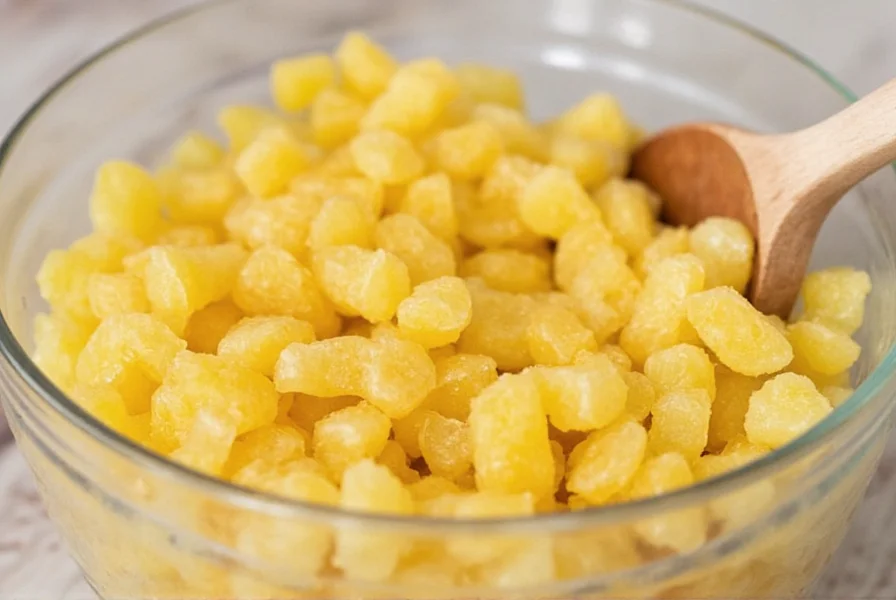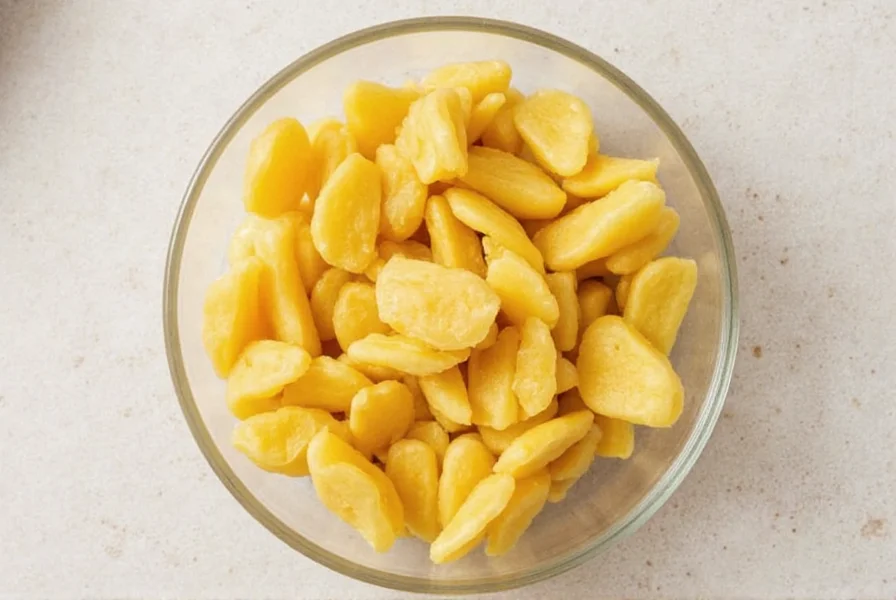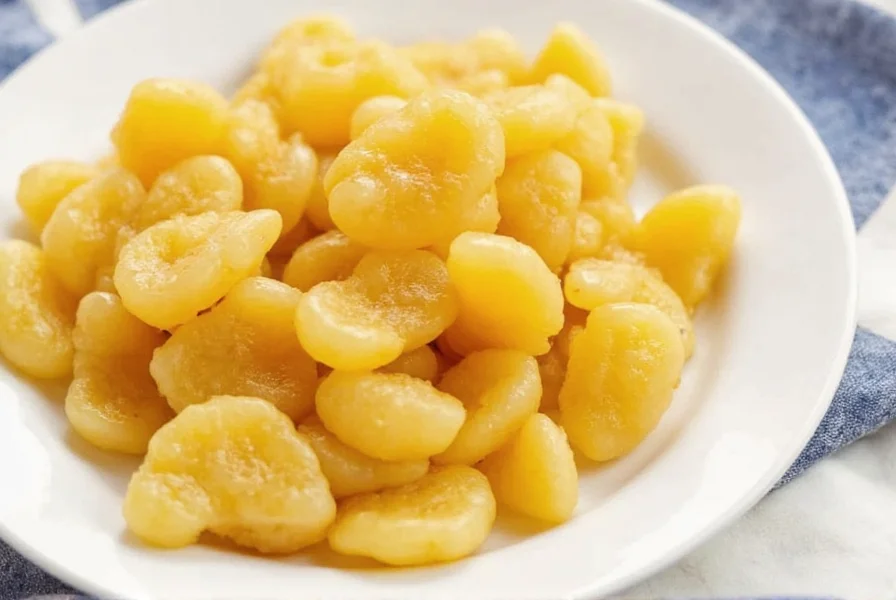Creating your own candied ginger at home transforms ordinary ginger root into a sweet, spicy treat perfect for snacking, baking, or soothing an upset stomach. Unlike store-bought versions that often contain preservatives and artificial flavors, this homemade candied ginger recipe gives you complete control over ingredients and sweetness level.
Why Make Your Own Candied Ginger
Commercial candied ginger frequently uses inferior ginger varieties and excessive preservatives. When you prepare easy candied ginger preparation yourself, you ensure premium quality using fresh, organic ginger. The process requires minimal equipment and yields a versatile ingredient that costs significantly less than specialty store versions.
Essential Ingredients for Perfect Candied Ginger
The beauty of this simple candied ginger instructions lies in its minimal ingredient list. Quality matters most with these four components:
| Ingredient | Quantity | Why It Matters |
|---|---|---|
| Fresh ginger root | 1 pound (450g) | Firm, smooth skin indicates freshness; older ginger becomes fibrous |
| Granulated sugar | 2 cups | Creates the syrup base; organic preferred for cleaner taste |
| Water | 2 cups | Helps dissolve sugar gradually for proper crystallization |
| Lemon juice | 2 tablespoons (optional) | Prevents over-crystallization and adds brightness |

Step-by-Step Candied Ginger Preparation
Follow these five straightforward steps for perfect results every time. This homemade candied ginger recipe yields approximately 12 ounces of finished product.
Step 1: Prepare the Ginger
Wash 1 pound of ginger thoroughly. Using a vegetable peeler or spoon, remove the thin skin. Slice ginger into 1/8-inch thick coins or matchsticks. Thinner slices create more tender results while thicker pieces maintain chewiness.
Step 2: Create the Sugar Syrup
Combine 2 cups sugar and 2 cups water in a medium saucepan. Bring to a gentle simmer over medium heat, stirring until sugar dissolves completely. Add the ginger slices and optional lemon juice.
Step 3: Simmer Until Tender
Reduce heat to low and simmer uncovered for 45-60 minutes. The ginger should become translucent and tender when pierced with a fork. Stir occasionally to prevent sticking. The liquid will reduce and thicken into a syrup.
Step 4: Drain and Dry
Using a slotted spoon, transfer ginger pieces to a wire rack set over parchment paper. Allow to drain for 15-20 minutes until no longer dripping. Reserve the syrup for tea or cocktails.
Step 5: Sugar Coating (Optional)
For traditional crystallized texture, toss cooled ginger pieces in additional granulated sugar. For softer candied ginger, skip this step and let pieces air-dry completely on the rack.

Storage Tips for Long-Lasting Candied Ginger
Proper storage ensures your candied ginger storage tips yield maximum shelf life:
- Air-dry completely before storing to prevent stickiness
- Store in airtight containers with parchment between layers
- Keep at room temperature for 1-2 months
- Refrigerate for up to 6 months (may harden slightly)
- Freeze for up to 1 year in vacuum-sealed bags
Creative Uses for Homemade Candied Ginger
Your uses for homemade candied ginger extend far beyond snacking. Try these applications:
- Chop finely for cookie or bread batter
- Infuse simple syrup for cocktails
- Add to tea for natural nausea relief
- Crumble over ice cream or yogurt
- Include in trail mix with nuts and dried fruit
- Use as a garnish for chocolate desserts
Common Variations to Customize Your Recipe
Experiment with these adaptations to create your signature ginger preservation method:
- Spiced version: Add cinnamon sticks or star anise to the syrup
- Chile-infused: Include dried chile peppers for sweet-heat contrast
- Lavender ginger: Steep culinary lavender in the syrup
- Maple variation: Replace 1/2 cup sugar with pure maple syrup
- Less sweet option: Reduce sugar to 1.5 cups for more ginger-forward flavor
Troubleshooting Common Issues
Even with this straightforward candied ginger recipe, occasional challenges arise:
- Too tough: Ginger wasn't simmered long enough; return to syrup for additional 15 minutes
- Too sticky: Insufficient drying time before storage; spread on rack and dry longer
- Crystallized syrup: Temperature too high during simmering; next time maintain gentle bubble
- Bitter taste: Used older ginger; select fresher roots with smooth skin next time
Frequently Asked Questions
Can I use old ginger for candying?
While possible, older ginger develops tough fibers that don't soften well during cooking. For the best texture in your homemade candied ginger recipe, select firm roots with smooth, taut skin and minimal wrinkles. Younger ginger yields more tender results with better flavor absorption.
How do I prevent crystallization in the syrup?
To avoid unwanted sugar crystals, maintain a gentle simmer rather than a rolling boil. Adding 2 tablespoons of lemon juice or corn syrup to your sugar syrup helps prevent crystallization. Avoid stirring the syrup excessively once the ginger has been added, as this can encourage crystal formation.
What's the difference between crystallized and candied ginger?
Crystallized ginger refers specifically to pieces coated in granulated sugar after cooking, creating a crunchy exterior. Candied ginger is the broader term that includes both sugar-coated and non-coated versions simmered in sugar syrup. All crystallized ginger is candied, but not all candied ginger is crystallized.
Can I make candied ginger without sugar?
Traditional candied ginger requires sugar for both preservation and texture. Sugar substitutes don't provide the same crystallization properties. For reduced sugar content, you can decrease the sugar slightly (to 1.5 cups), but eliminating it entirely will result in preserved ginger rather than true candied ginger that won't keep as long.
Why did my candied ginger become hard over time?
Hardening typically occurs when ginger wasn't fully immersed in syrup during cooking or wasn't sufficiently dried before storage. Humidity can also cause sugar-coated pieces to initially soften then harden. Store in an airtight container with a silica packet to maintain optimal texture, or briefly microwave hardened pieces (5-10 seconds) to restore chewiness.











 浙公网安备
33010002000092号
浙公网安备
33010002000092号 浙B2-20120091-4
浙B2-20120091-4